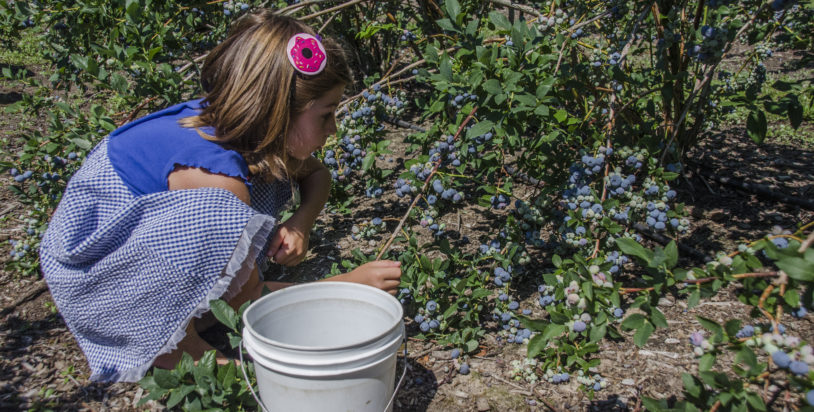
How To Plan a Small Home Garden
Want to start a garden, but don’t have any experience? Britt Uecker, the greenhouse manager at Grow Benzie, walks us through it step by step. “Growing plants is a miracle before your eyes,” Britt says. “How can all that information be packaged inside that tiny little seed?” We’re about to find out.
Here’s what you need to consider when starting a new garden:
What’s the minimum amount of space needed for a small outdoor garden?
Some people who live in apartments/condos with limited space do container gardening, but a key factor with something like this is to remember the smaller soil amount also dries out quicker and requires more diligent watering. A new gardener might start out with a 4’x4′ plot so that it’s accessible from all sides for ease of working and weeding.
What do you consider when choosing a plot of land?
Slope of the land; if it’s too hilly the water may run off. The type of soil is also very important. Much of Northern Michigan has quite sandy soil which may need amendments such as peat moss, compost, and/or composted manure to help hold the moisture in the soil.
How do you prep the land?
Ideally, the ground grows intended crops most easily if the ground is prepared the season before so that persistent weeds and grasses don’t outcompete for the needed resources: sun, water, nutrients. If a rototiller or cultivator is not available, the ground can be cut and loosened with a shovel and a pitchfork to remove the unwanted existing plants. The ground should be raked relatively flat to prepare for planting.
What equipment is needed?
A few hand tools (trowel, hand-held rake, weeder), a shovel and a bow rake are just a few good ones to have on hand.
What are the easiest plants for beginners and kids?
Some of the most responsive and easy plants to grow are: (from starts at a greenhouse/garden center) tomatoes and kale, (from seed) radishes—they grow in 30 days!—peas, beans, cucumbers, potatoes, and zucchini.
The seeds are planted, what now?
If seeds are planted, they MUST be kept moist the entire time until germination. Then very regular watering, generally every other day or as needed. I like to do a finger poke test into the soil. If my finger feels cool and moist, no water is needed. If it’s dry, it’s time to water, slowly, and thoroughly so that it has time to percolate through the soil profile. Again a finger poke will tell you how far the water has reached down. Most roots reach down to 6 inches or so, and that is where they ‘drink’ from. Watering with a wand helps to get the water where it’s needed, at soil level … watering the leaves is like pouring water on a thirsty person’s arm—not where it’s needed.
Also, diligent weeding at least once a week to keep the job manageable, and for the WHOLE season. Planting is the most exciting part of gardening, and a lot of people tend to drop the ball on watering and weeding, life happens … but it’s like brushing your teeth and doing the dishes. It needs to be done, often for good plant health and successful gardening.
Any tips?
There aren’t any vegetables that I know of that don’t require full sun, six plus hours of continuous light. Plants may grow in lower light conditions, but they will not thrive. Also, keep in mind how big the plant will be when it’s full grown and give it enough space. It’s very tempting to overplant when the plants are small, but again they will shade each other if not given sufficient room to grow. Also, did I say water, weed, water, weed, and repeat?
Want a little extra gardening help? Stop by Fridays With Britt for a garden tour, to ask questions, and get tips about soil health, seed starting and garden planning. The free event is held every Friday from 10 a.m. to noon during the growing season (May through September). Grow Benzie is located at 5885 Frankfort Hwy. (M115) in Benzonia. For more information, call 231.882.9510.
By: Carly Simpson, MyNorth Media
